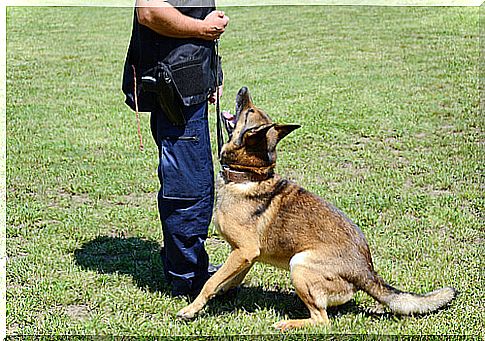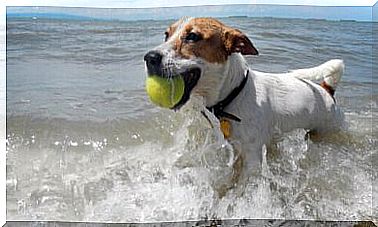Basic Obedience Exercises In Dogs

Specialists emphasize the importance of basic obedience exercises in dogs for the development of their cognitive and social skills. Teaching your best friend the basic commands is simple and very beneficial to their education.
The fundamentals of obedience in dogs
Obedience is a fundamental aspect of canine education, and can be considered an essential condition for the training of the animal, but it must be pointed out that there is a difference between teaching obedience and training.
There are different levels and types of training suitable for animals. Currently, three main purposes guide canine obedience exercises:
- Working dogs: guide dogs, police dogs, rescue dogs, etc.
- Breeds participating in sports competitions.
- Domestic and companion dogs

Basic obedience exercises make up a dog’s first level of training . They are the primary and general orders which include “stay”, “sit”, “down”, “stop”, “come” and “leave”.
These commands are the most used to start educating domestic and working dogs. The training of the latter, for example, begins with basic exercises, in addition to the incentive of the game.
Basic Obedience Exercises: The Importance of Positive Reinforcement
Positive reinforcement is about rewarding the right behaviors to stimulate skill learning and to promote obedience, especially in more independent dogs.
To easily teach basic obedience exercises to your dog, the ideal is to praise and reward him for carrying out the required commands. In this way, the animal will be able to improve its ability to learn and socialize, and its self-esteem will be strengthened.
The reward must be offered in the short term, so that the animal can associate it with a specific behavior. The best thing is to give him the reward immediately after responding to the behavior that is considered positive.
However, certain criteria will need to be established to avoid unconscious training and create bad habits. That is, the dog must not think he can receive a reward for any behavior.
Violence is always counterproductive
With a negative or dominant method, the aim is to obtain the desired behaviors by generating fear and anxiety in the animal. Obedience, in this case, ends up being an obligatory response to a process of physical and emotional deterioration, and the dog’s well-being and health are compromised.
Furthermore, violence has already been proven to be counterproductive to dog behavior and obedience. Those subjected to mistreatment and abuse can suffer trauma, which blocks most of their cognitive abilities. A large majority develop so-called “defensive aggression”.
This is why we insist that using positive reinforcement means eliminating any violent attitudes or attitudes during the educational process.
6 tips for teaching basic obedience exercises to dogs
1- Commit yourself
It is important to be consistent in educating an animal. He must fully assimilate the commands, and this requires commitment and patience on the part of the master. If the owner does not have time available, it is best to consult a professional trainer.
2- How long to teach
We recommend that you take 10 minutes a day to practice obedience exercises with your dog, as overloading the animal is counterproductive and leads to distraction.
3- How to teach
The basic obedience exercises must be done individually to make it easier for the dog to fully understand them. The ideal is to dedicate 3 to 10 days to the presentation and execution of each command.
The assimilation time depends on the animal and the dedication of the teacher, as it has been shown that some breeds are able to learn more easily. The Border Collie, for example, can learn one command a day with the right guidance.

Positive reinforcement
4- Use positive reinforcement
Positive reinforcement is always the best option to encourage canine obedience. This doesn’t have to be something to eat, but also a caress, games, etc.
5- Choose a suitable place
To avoid distractions, especially in puppies, it is important to choose a quiet place to train your dog. You should prefer one that does not have many external stimuli, such as other dogs, noises, music, the smell of food, etc.
6- Make the dog remember the commands learned
It is essential to dedicate one or two days a week to make the animal remember the basic obedience exercises that have already been taught. Otherwise, the dog may forget or confuse the commands, which compromises obedience.









